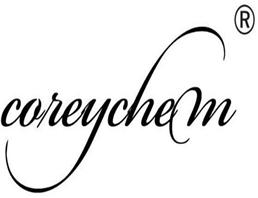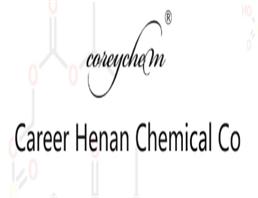
Titanium dioxide
| Price | $1 |
| Package | 1kg |
| Min. Order: | 1kg |
| Supply Ability: | 100KG |
| Update Time: | 2019-07-06 |
Product Details
| Product Name: Titanium dioxide | CAS No.: 13463-67-7 |
| Min. Order: 1kg | Purity: 99% |
| Supply Ability: 100KG | Release date: 2019/07/06 |
AD68
| Titanium dioxide Basic information |
| Product Name: | Titanium dioxide |
| Synonyms: | UNITANE;PIGMENT WHITE 6;TIO2;TITANIC ANHYDRIDE;TITAN DIOXIDE;TITANIA;TITANIUM(+4)OXIDE;TITANIUM DIOXIDE, ANATASE |
| CAS: | 13463-67-7 |
| MF: | O2Ti |
| MW: | 79.8658 |
| EINECS: | 215-280-1 |
| Product Categories: | Inorganics;Indoles;Inorganic Chemicals;metal oxide;PETRO CHEM;colorant;Pharmaceutical intermediates |
| Mol File: | 13463-67-7.mol |
 |
|
| Titanium dioxide Chemical Properties |
| Melting point | 1840 °C |
| Boiling point | 2900 °C |
| density | 4.26 g/mL at 25 °C(lit.) |
| refractive index | 2.61 |
| Fp | 2500-3000°C |
| storage temp. | -20°C |
| solubility | Practically insoluble in water. It does not dissolve in dilute mineral acids but dissolves slowly in hot concentrated sulfuric acid. |
| form | powder |
| color | White to slightly yellow |
| PH | 7-8 (100g/l, H2O, 20℃)(slurry) |
| Water Solubility | insoluble |
| Merck | 14,9472 |
| CAS DataBase Reference | 13463-67-7(CAS DataBase Reference) |
| NIST Chemistry Reference | Titanium dioxide(13463-67-7) |
| EPA Substance Registry System | Titanium oxide (TiO2)(13463-67-7) |
| Safety Information |
| Hazard Codes | Xn,Xi,C |
| Risk Statements | 20-36/37/38-20/21/22-38-20/21-10-36/38-22-36-34-40 |
| Safety Statements | 26-36-25-2-36/37-45-36/37/39 |
| WGK Germany | - |
| RTECS | XR2275000 |
| TSCA | Yes |
| HS Code | 28230000 |
| Hazardous Substances Data | 13463-67-7(Hazardous Substances Data) |
| MSDS Information |
| Provider | Language |
|---|---|
| Titania | English |
| SigmaAldrich | English |
| ACROS | English |
| ALFA | English |
| Titanium dioxide Usage And Synthesis |
| Chemical Properties | The naturally occurring dioxide exists in three crystal forms: anatase, rutile and brookite. While rutile, the most common form, has an octahedral structure. Anatase and brookite have very distorted octahedra of oxygen atoms surrounding each titanium atom. In such distorted octahedral structures, two oxygen atoms are relatively closer to titanium than the other four oxygen atoms. Anatase is more stable than the rutile form by about 8 to 12 kJ/mol (Cotton, F.A., Wilkinson, G., Murillo, C.A and M Bochmann. 1999. Advanced Inorganic Chemistry, 6th ed, p. 697, New York: John Wiley & Sons) Other physical properties are: density 4.23g/cm3; Mohs hardness 5.8 g/cm3 ( anatase and brookite) and 6.2 g/cm3 ( rutile); index of refraction 2.488 (anatase), 2.583 (brookite) and 2.609 (rutile); melts at 1,843°C; insoluble in water and dilute acids; soluble in concentrated acids. | |||||||||||||||||||||||||||||||||||||||||||||||
| Uses | Titanium dioxide is an extreme white and bright compound with high index of refraction. In paints it is a white pigment and an opacifying agent.It is in house paints, water paints, lacquers, enamels, paper filling and coating, rubber, plastics, printing ink, synthetic fabrics, floor coverings, and shoe whiteners. Also, it is used in colorants for ceramics and coatings for welding rods. A rutile form of the dioxide is used in synthetic gem stones. | |||||||||||||||||||||||||||||||||||||||||||||||
| Application |
|
|||||||||||||||||||||||||||||||||||||||||||||||
| Uses | titanium dioxide (TiO2) is one of the 21 FDA-approved sunscreen chemicals with an approved usage level of 2 to 25 percent. When applied, titanium dioxide remains on the skin’s surface, scattering uV light. It is often used in conjunction with other sunscreen chemicals to boost the product’s SPF value, thus reducing the risk of irritation or allergies attributed to excessive usage of chemical sunscreens. Its incorporation into sunscreen formulations, makeup bases, and daytime moisturizers depends on the particular size of titanium dioxide employed. The smaller the particle size, the more unobtrusive Tio2’s application. Large particles, on the other hand, leave a whitish wash or look on the skin. Some companies list “micro” or “ultra” when referring to the size of the titanium dioxide particle. According to some sources, titanium dioxide could be the ideal uVA/uVB protection component given its chemical, cosmetic, and physical characteristics. Titanium dioxide is also used to provide a white color to cosmetic preparations. | |||||||||||||||||||||||||||||||||||||||||||||||
| Preparation | Titanium dioxide is mined from natural deposits. It also is produced from other titanium minerals or prepared in the laboratory. Pigment-grade dioxide is produced from the minerals, rutile and ilmenite. Rutile is converted to pigment grade rutile by chlorination to give titanium tetrachloride, TiCl4. Anhydrous tetrachloride is converted back to purified rutile form by vapor phase oxidation. Anatase form is obtained by hydrolytic precipitation of titanium(IV) sulfate on heating. The mineral ilmenite is treated with concentrated sulfuric acid. Heating the sulfate solution precipitates hydrous titanium oxide. The precipitate is calcined to expel all water. Titanium dioxide also can be prepared by heating Ti metal in air or oxygen at elevated temperatures. |
|||||||||||||||||||||||||||||||||||||||||||||||
| Uses | Airfloated ilmenite is used for titanium pigment manufacture. Rutile sand is suitable for welding-rod-coating materials, as ceramic colorant, as source of titanium metal. As color in the food industry. Anatase titanium dioxide is used for welding-rod-coatings, acid resistant vitreous enamels, in specification paints, exterior white house paints, acetate rayon, white interior air-dry and baked enamels and lacquers, inks and plastics, for paper filling and coating, in water paints, tanners' leather finishes, shoe whiteners, and ceramics. High opacity and tinting values are claimed for rutile-like pigments. | |||||||||||||||||||||||||||||||||||||||||||||||
| Hazard | Lower respiratory tract irritant. Possible carcinogen. | |||||||||||||||||||||||||||||||||||||||||||||||
| Safety Profile | A nuisance dust. A human skin irritant. Questionable carcinogen with experimental carcinogenic, neoplastigenic, and tumorigenic data. Violent or incandescent reaction with metals at high temperatures (e.g., aluminum, calcium, magnesium, potassium, sodium, zinc, lithium). See also TITANIUM COMPOUNDS. |
Company Profile Introduction
Established in 2014,Career Henan Chemical Co. is a manufacturerspecializing in the sale of fine chemicals.
Mainly deals in the sales of:
Pharmaceutical intermediates
OLED intermediates:
Pharmaceutical intermediates;
OLED intermediates;
You may like
Recommended supplier
| Product name | Price | Suppliers | Update time | |
|---|---|---|---|---|
| $0.00/25kg |
VIP2Y
|
Shaanxi Dideu New Materials Co. Ltd
|
2025-12-08 | |
| $1200.00/1ton |
VIP1Y
|
Lianyungang Kaiyu Environmental Tech Co., Ltd.
|
2025-08-29 | |
| $/ |
VIP5Y
|
RongNa Biotechnology Co.,Ltd
|
2025-04-29 | |
| $1.00/1kgs |
Hangzhou Lin'an tianhong biotechnology co.,ltd.
|
2025-02-10 | ||
| $0.00/1KG |
TEKA-FAST LIMITED
|
2025-01-03 | ||
| $2.00/1000kg |
VIP2Y
|
Aurora Industry Co., Ltd.
|
2024-09-06 | |
| $0.10/1KG |
VIP7Y
|
Shaanxi Dideu Medichem Co. Ltd
|
2024-08-21 | |
| $8.00/1KG |
VIP5Y
|
Hebei Chuanghai Biotechnology Co,.LTD
|
2024-08-21 | |
| $3.50/1kg |
Hebei Andu Technology Com.,Ltd
|
2024-08-17 | ||
| $100.00/1kg |
VIP2Y
|
HEBEI SHENGSUAN CHEMICAL INDUSTRY CO.,LTD
|
2024-08-15 |
- Since: 2014-12-17
- Address: Zhengzhou High tech Zone, Henan Province, China
INQUIRY
杨俊青
sales@coreychem.com
sales@coreychem.com






 China
China